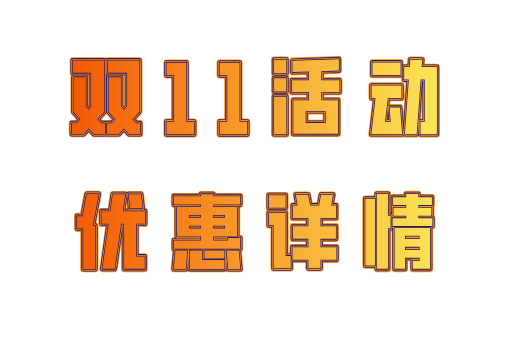China rethinks 8% rule as growth slows
By By Jamil Anderlini in Beijing
By the standards of almost any other economy in the world, the 8.9 percent annual growth rate China notched up in the fourth quarter last year would be seen as an unqualified success.
But in Beijing on Tuesday the mood was sombre as the government announced the country’s lowest increase in gross domestic product in 10 quarters.
China entered 2011 with a growth rate of 9.7 per cent in the first quarter and a government focused on tackling inflation, but ended it with a full-year GDP increase of 9.2 per cent, the same rate as in crisis-hit 2009, when growth came in at the lowest level since 2002.
At first glance, the gradual slowdown – to 9.5 per cent in the second quarter, then 9.1 per cent in the third and now 8.9 per cent in the fourth – is exactly Beijing’s target for last year, especially as annualised inflation peaked at 6.5 per cent in July and was down to 4.1 per cent by the end of December.
But at a press conference held to unveil the latest figures, the spokesman for China’s National Bureau of Statistics expressed official concerns that things are likely to get worse in the coming months.
“In terms of the domestic and international situation 2012 will be a year of complexity and challenges so we should be fully prepared,” said NBS spokesman Ma Jiantang in a speech laced with words like “gloomy”, “complicated” and “severe”.
Most analysts, no matter whether they are bullish or bearish on China’s longer-term prospects, expect growth to slow significantly in the coming months, to well below an annualised rate of 8 per cent in the first quarter. Some are even predicting full-year growth as low as 7.5 per cent in 2012.
Yet for nearly a decade the ruling Communist party has formulated its economic policy on the assumption that 8 per cent GDP growth is the minimum required to stave off social instability that could threaten one-party rule.
As the economy continues to decelerate, the government appears to be rethinking that formula, although not the underlying assumption.
In comments reported last week, Yu Yongding, an influential academic economist and adviser to the government, said GDP growth of between 7 and 8 per cent would be acceptable in China, but a drop below 7 per cent would signal an economic crisis, or even a political crisis.
“The authorities are clearly still trying to navigate between the twin dangers of overstimulating the economy again and causing the current slowdown to sharpen dangerously,” said Stephen Green, an economist at Standard Chartered. “Many officials are of the view that the economy needs to be deleveraged and China needs to get used to a slower growth rate.”
Most indications are that the current pace of China’s slowdown is still within the government’s comfort zone and most economists believe Beijing will be able to engineer a “soft landing” to a lower long-term growth rate above that new level.
Unlike in late 2008 and early 2009, when economic activity in China plummeted precipitously, the current deceleration has been gradual and largely the result of government measures to rein in credit and cool surging inflation.
But while Beijing was able to pump up growth with a Rmb4trn ($633bn) stimulus package aimed at countering the effects of the global economic crisis three years ago, the government is not in a position to repeat that feat today.
“The probability and likely effectiveness of a big stimulus is much lower now as the government is still dealing with the hangover from the last round of stimulus,” said Huang Yiping, chief China economist at Barclay’s Capital.
He believes Beijing will be able to achieve just above 8 per cent growth in 2012 but says there are serious downside risks to that forecast.
“China has very heavily indebted local governments and has seen an extraordinary credit expansion that contributed to large asset bubbles, particularly in housing, over the last few years,” he said. “Over-investment is also a major concern and these are all problems that have contributed to collapse in other developing economies in the past.”
The biggest immediate risks to the economy come from the two sectors that have been the main drivers of growth in China for the last decade – exports and residential real estate.
The US and crisis-hit Europeare China’s biggest markets and export growth to both regions slowed in the fourth quarter last year and is expected to slow a lot more, particularly to Europe.
A major correction in the residential real estate market now appears to be under way after nearly two years of progressively restrictive government policies aimed at reining in soaring house prices.
Residential housing floor space under construction fell 25 per cent in December, while floor space sold fell 8.4 per cent from a year earlier, compared to average growth of 12.9 per cent in the third quarter of 2011.
Real estate investment directly accounts for around 13 per cent of GDP so a collapse in the sector would have serious repercussions, not just in China but for all the commodity exporting countries that rely on Chinese construction for their own growth.
With its twin engines of growth both sputtering, it seems the best the country and its government can hope for is a continued gradual and orderly deceleration in growth, of the kind the technocrats in Beijing have managed to engineer so far.
Source





 雷达卡
雷达卡







 提升卡
提升卡 置顶卡
置顶卡 沉默卡
沉默卡 变色卡
变色卡 抢沙发
抢沙发 千斤顶
千斤顶 显身卡
显身卡











 京公网安备 11010802022788号
京公网安备 11010802022788号







